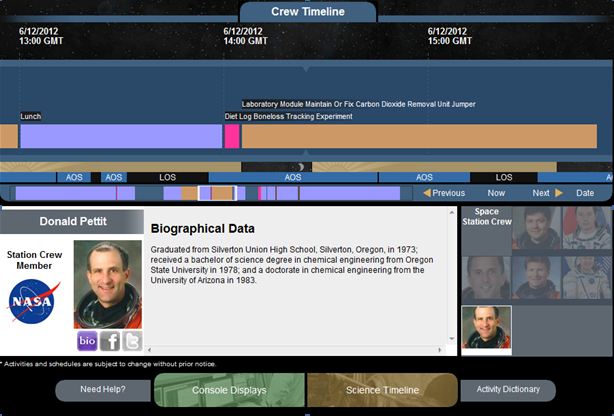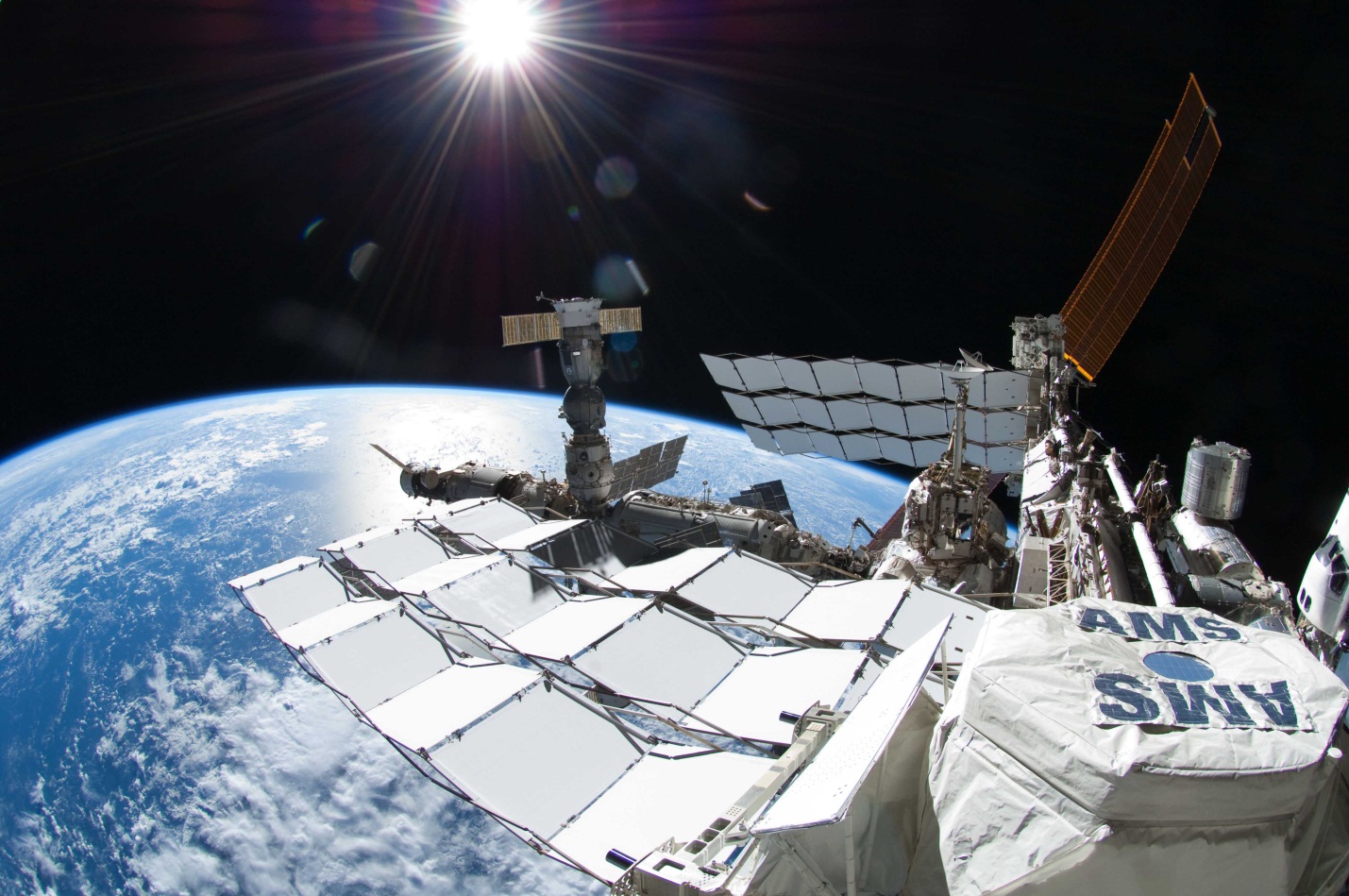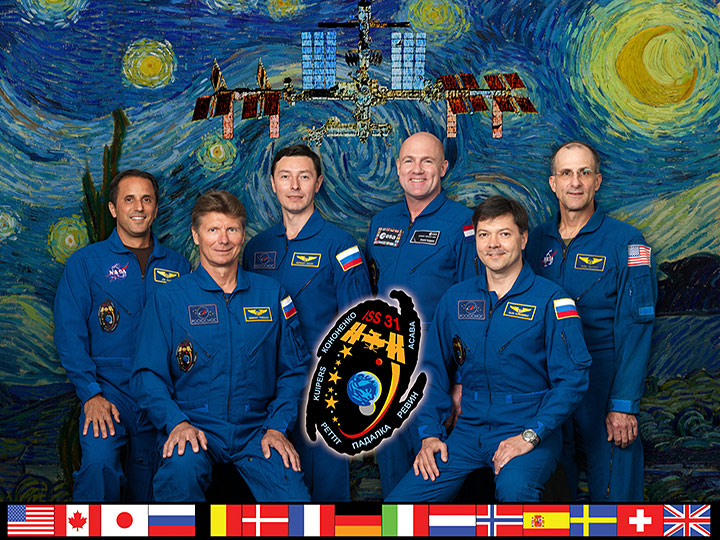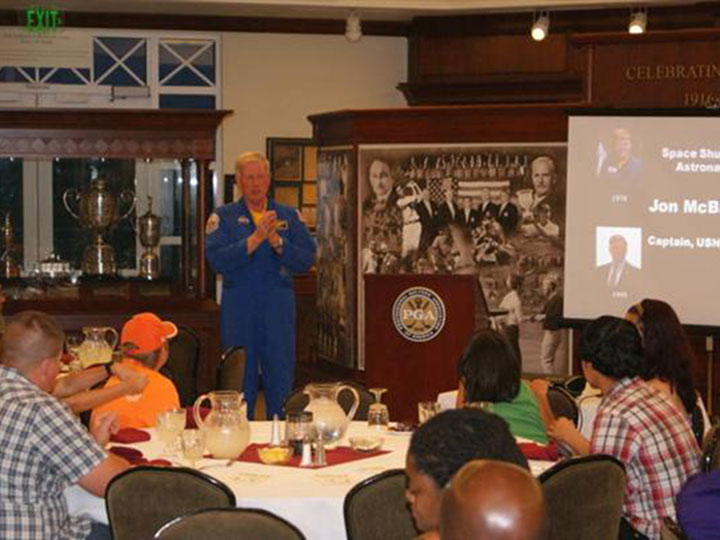Right now, six people are living and working on-board the International Space Station (ISS) while it orbits approximately 200 miles above our planet. NASA astronauts Don Pettit and Joe Acaba, European Space Agency astronaut Andre Kuipers, and Russian cosmonauts Oleg Kononenko, Sergei Revin, and Gennady Padalka are working together to advance our basic knowledge in science and technology, learn more about how to expand our civilization into space, and enable economic development through the exposure of various materials and life forms to the unique microgravity environment in order to develop practical applications.
While the astronauts are serving as the crew for Expedition 31, it’s not just their workplace. It’s also their home for up to six months where they eat, sleep, exercise, and relax. It is important to maintain a healthy balance of work and personal time on long-duration missions, much like you would see here on the ground. Space Station crews value their weekends! They even have an Internet phone to call friends and family to catch up on terrestrial events.
During the workweek, however, the astronauts are busy with Station maintenance, daily exercise, and science mission activities. NASA’s Web app, ISS Live!, now provides us with unique insight into what day-to-day schedules are like on-board the Space Station. For example, the “Crew Timeline” feature shows the astronauts’ schedules for today, June 12, 2012.

This page shows that Don spent most of Tuesday, June 12, working with Gennady on maintenance of the carbon dioxide removal system, while Andre communicated with students on the ground using the Station’s HAM radio and Oleg performed maintenance on the Russian oxygen generator system. These are all important tasks because the ISS has to clean and filter its own air and water with special machines, as opposed to the natural water, carbon, and nitrogen cycles at work here on Earth.
Later in the day, Andre spent an hour working out on the Advanced Resistive Exercise Device, while Joe completed a 90-minute run on the TVIS treadmill, and Don enjoyed some unscheduled time after his jog on the infamous COLBERT. As their day winds down, the “Science Timeline” function shows that science activities continue into the evening.

The Space Acceleration Measurement System is constantly recording data on the motion and vibrations of the Space Station. This information will help us design the next generation of space vehicles and space stations to operate more efficiently and with less impact to experiments and instruments that are sensitive to disturbances.
The Combustion Integrated Rack facility is conducting a five-hour ground-controlled experiment on how materials burn in space. Since there is no convection in the vacuum of space, a better understanding of how fire behaves in this environment will help us to build better rockets and design spacecraft that prevent fires from spreading in an emergency.
The Alpha Magnetic Spectrometer (AMS) is a massive particle detector mounted on the external structure of the ISS. It is so big that it required its own Shuttle flight, STS-134, to be installed. This experiment uses the universe itself as a particle accelerator to capture cosmic radiation traveling through our part of the galaxy. The AMS will help to unravel some of the mysteries behind dark matter and dark energy as these exotic particles are captured and studied.

This app also allows us to look ahead to see the science activities scheduled for June 13, 2012. Working around a planned fire drill and life support system maintenance, the crew will support a Capillary Flow Experiment that studies how fluids move in microgravity. Because there is no gravity in space to direct fluids in their container, the Station is equipped with specialized pumps and machinery to move fluids around. A better understanding of the physics of fluid motion in space will enable us to design more efficient fuel and water tanks that will make spacecraft less expensive to operate.
This is all just a snapshot of one day’s activities. Soon, activities will expand as the Station will see the second berthing of the SpaceX Dragon commercial cargo capsule, first launch of Orbital’s Cygnus commercial cargo carrier, delivery of a suite of new High-Definition cameras and student-designed experiments from the YouTube Space Lab competition, and an array of commercial research flown in NanoRacks modules.
the ISS National Lab will also soon sponsor the first two experiments on-board the privately-developed NanoRacks External Platform, a call for space research projects in protein crystallization, deployment of the Windows On Earth augmented reality system for enhanced crew photography, and a call for Earth Science research that will take advantage of observation instruments already installed on the ISS. Even as the ISS National Lab builds new capabilities for the future of space-based research on the Station, we think it’s important to make the best use of the resources already available.
the ISS National Lab and NASA will continue to work together to make sure that every day on Station adds to our understanding of the universe and brings value to life here on Earth.






